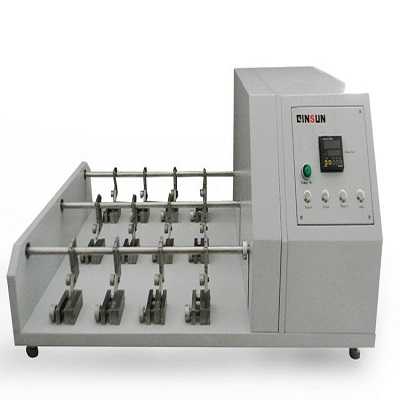Bally Type Flexometer 6-12-24 Working Places
Standards:
EN ISO 20344:6.6, I.U.P.10+20, I.U.P.20, UNI 4818, DIN 53.351, UNE/I.U.P.20
Applications:
The Bally flexometer is the internationally-accepted method for the assessment of the flexing endurance of light leathers and their surface finishes. The tendency for cracks to form in the creases caused by walking can also be determined. The Bally flexer has a different flexing mechanism to the vamp flexer and is complementary to it. It is also used to precondition samples prior to determining water vapour permeability - particularly in assessing uppers for protective footwear.
Product Information:
The twelve stations are conveniently arranged for user access and the mounting of samples. A pre-determined counter is fitted to the machine, allowing it to be operated without continuous attendance as the machine stops automatically once the set count is reached.
The twelve stations are conveniently arranged for user access and the mounting of samples. A pre-determined counter is fitted to the machine, allowing it to be operated without continuous attendance as the machine stops automatically once the set count is reached.
Mechanical characteristics:
The Bally flexometer machine is simple to use, is bench mounted and supplied ready to connect to the electrical supply.
The equipment with either 6, 12 working stations are also available.
Low temperature versions of this equipment are also available (to -20°C) subject to ambient temperatures in location of machine.
Product Display

Product Display

评论
发表评论